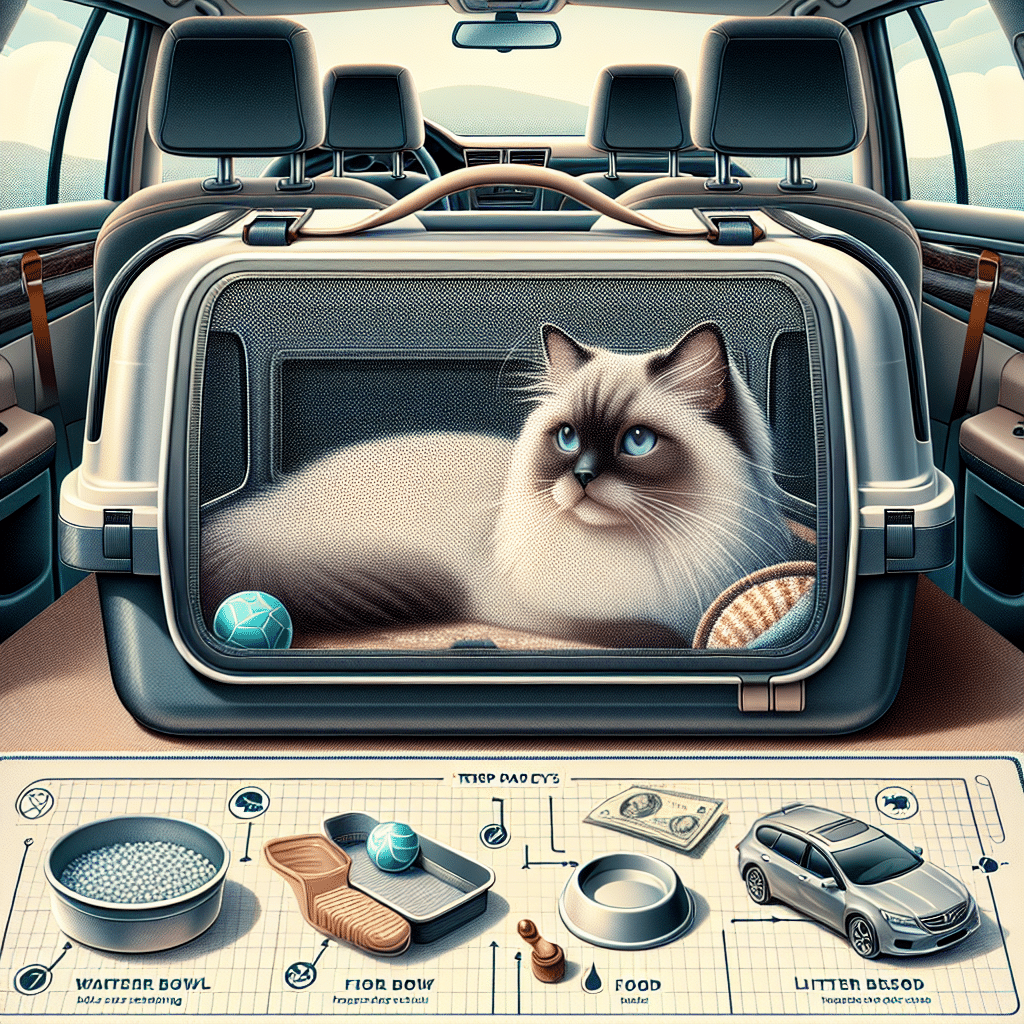Understanding the Necessity of Cat Safety on Long Trips
Traveling with cats can be both a rewarding and challenging experience. Cats are creatures of habit, and long journeys can cause stress. Therefore, knowing how to ensure their safety and comfort is crucial.
Preparing for the Journey
1. Veterinary Check-Up
Before hitting the road, schedule a visit to your veterinarian. This check-up can prevent unforeseen health issues during your trip. Discuss vaccinations, flea and tick prevention, and inquire if your cat needs any additional medications for travel anxiety.
2. Identifying Your Cat
Ensure your cat is microchipped and wearing a collar with an ID tag that includes your contact information. This is essential in case your cat escapes during transit, especially in unfamiliar areas.
3. Choosing the Right Carrier
Select a sturdy, well-ventilated carrier that gives your cat enough space to stand, turn, and lie down comfortably. Familiarizing your cat with the carrier in advance can ease anxiety. Place familiar blankets or toys inside to provide comfort.
Packing Essentials for Your Cat
1. Cat Food and Water
Bring enough cat food for the trip, plus a bit extra in case of delays. If your cat has specific dietary needs, carry a sufficient supply. Include portable water dishes or bottles and water to keep them hydrated.
2. Litter Supplies
Ensure you have a portable litter box and cat litter. Consider disposable options for convenience. Regular bathroom breaks are vital for your cat’s well-being during long drives.
3. Health and First Aid Kit
Compile a kitty first aid kit that includes bandages, antiseptic wipes, and any medications your cat may need. Consult your vet for recommendations on what else to include.
Implementing Safety Protocols During Travel
1. Using a Harness
If your cat is comfortable with it, using a harness and leash during breaks can prevent escape and keep them safe. Ensure the harness fits snugly but isn’t too tight, allowing free movement without risk of slipping out.
2. Temperature Control
Keeping your car at a comfortable temperature is crucial. Cats can easily become overheated or too cold. If you’re traveling in warm weather, ensure proper ventilation and never leave your cat alone in the car.
3. Securing the Carrier
During travel, always secure the carrier. Place it in a safe location where it won’t slide or tip over, such as on the floor behind the front seats. Avoid putting the carrier in the trunk, where climate and safety cannot be monitored.
Addressing Anxiety and Stress Management
1. Recognizing Signs of Stress
Watch for signs that indicate your cat is stressed, such as excessive meowing, pacing, or hiding. Understanding these behaviors allows you to address their needs promptly.
2. Calming Aids
Consider using calming sprays or feline pheromone diffusers before and during travel. Natural remedies, such as herbal calming supplements, can help alleviate anxiety. However, always check with your vet before administering any new treatment.
3. Making Frequent Stops
Schedule frequent stops for your cat to stretch, eat, and use the litter box. Aim for every 2-3 hours, allowing your cat to become familiar with new environments without feeling overwhelmed.
Handling Unfamiliar Environments
1. Setting Up a Safe Space
Once you reach your destination, create a comfortable, confined space for your cat. Use familiar objects like their bed and toys to help them relax in the new surrounding.
2. Exploring Gradually
Allow your cat to explore their new environment at their pace. Open the carrier in a secure room and let them come out when they feel ready, avoiding any sudden exposures to new stimuli.
3. Monitoring Behavior
Keep an eye on your cat’s response to the new setting. If they exhibit fearful behaviors, offer reassurance and comfort. Engaging in gentle play or providing treats can create a positive association.
Managing Emergencies on the Road
1. Locating Veterinary Services
Research veterinary clinics along your route before you travel. Having a list of emergency contacts ensures quick action if your cat falls ill or has an accident during your journey.
2. Car Accident Preparedness
In case of an accident, stay calm. Keep your cat secure and apply first aid if necessary. Only transport your cat if it’s safe to do so; otherwise, wait for emergency services.
Returning Home After the Trip
1. Re-establishing Routine
After your trip, help your cat readjust to their normal routine. Consistent feeding times, play sessions, and general daily structure can ease the transition.
2. Observing for Changes
Monitor your cat for any behavioral changes post-trip. If they show signs of anxiety or stress, consider contacting your veterinarian for advice or further assessment.
3. Maintaining a Safe Environment
Create a sanctuary for your cat at home where they can retreat if they feel overwhelmed. This place should contain their favorite blankets, toys, and perhaps even a scratching post.
Conclusion
Making travel arrangements for your cat requires careful planning and awareness of their needs. By preparing adequately, addressing anxiety, implementing safety measures, and monitoring their behavior, you can ensure your feline friend has a safe and enjoyable experience on long trips.
